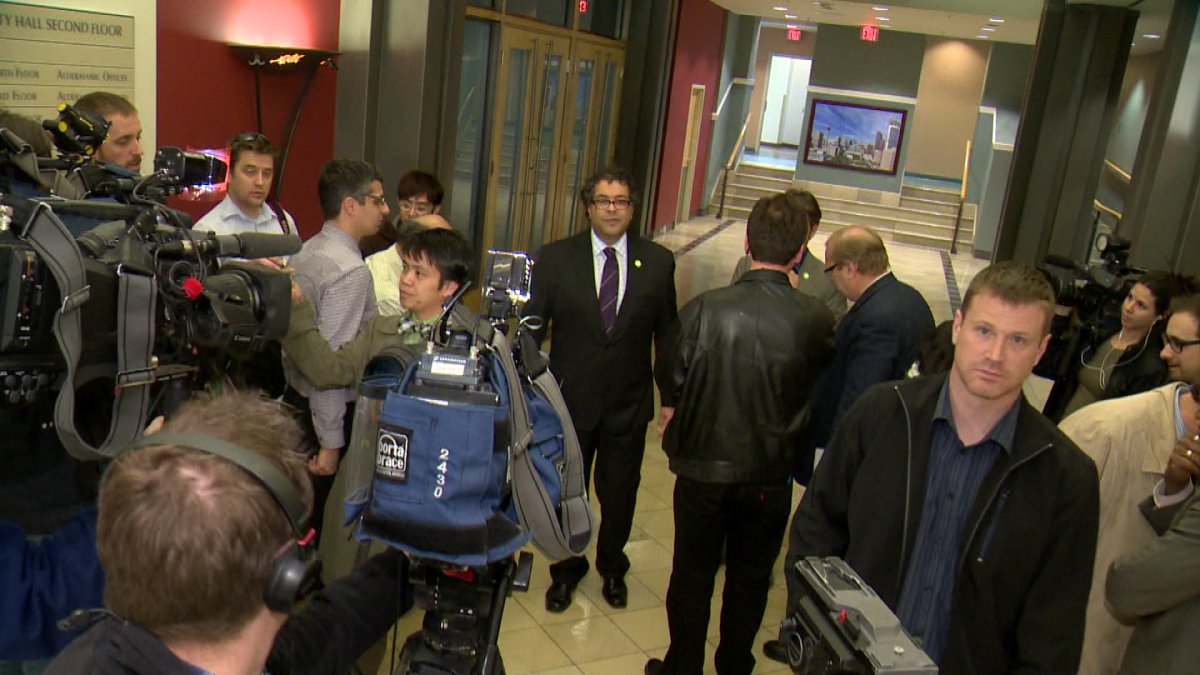On September 20, the Manning Foundation released a study by Jeromy Anton Farkas on Calgary city council. The study measured council votes, attendance, and number/type of in-camera sessions. I have some concerns with the methodology of the study, but it does produce some broad trends that voters in the 2013 election should consider.

The major methodological problem is that the study only looked at 73 votes over three years – a very small percentage of the total number of votes. Random samples are used in public opinion polling, but, as Farkas admits, “this was not a scientific sample.” As such, the sample selection of the researcher matters. Farakas states that he chose “votes on issues judged to command the public interest.” But, in this case, each of the votes was on economic issues and no non-economic issues (i.e., water fluoridation) were considered. The study might have come to very different conclusions on councillor voting and coalitions if non-economic issues were used.
- Uncertain future for Banff pedestrian zone after vehicle-friendly petition validated
- Proposed Renter’s Bill of Rights a good first step, but not enough for Alberta: advocate
- Fire crews contain wildfire northeast of Jasper
- Pro-Palestine protesters escorted out of downtown Calgary mall after allegedly vandalizing bookstore
All of the votes were measured on a “taxpayer friendliness” scale. This meant that votes that cut spending or taxes were friendly, but votes that increased spending or taxes were unfriendly. The problem with this superficial measurement is that, for example, a vote to spend money on flood relief would be counted as unfriendly to taxpayers. Actual taxpayers might have a different opinion. Nevertheless, it does give us an indication of each councillor’s fiscal views. Andre Cabot (75 per cent), Peter Demong (68 per cent), and Dale Hodges (63 per cent) were the most taxpayer -friendly. Druh Farrell (16 per cent), Gail MacLeod (20 per cent), Gord Lowe (22 per cent), and Brian Pincott (22 per cent) were the most unfriendly. Mayor Naheed Nenshi is right in the middle with a 50.7 per cent score. This result would vex Nenshi’s critics who describe him as a wild tax and spender.
This emphasis on economic issues reveals coalitions among some councillors. Demong and Chabot voted together 85 per cent of the time, and MacLeod-Carra-Pincott-Lowe voted together 84-89 per cent. But Nenshi lacks a coalition since councillors voted with him 47-73 per cent of the time. Carra and Hodges voted with the major most often, and Farrell-Lowe-Colley-Urquhart voted with him the least amount of time. Clearly there is no ideological coalition that votes with, or against, Nenshi on economic issues. Furthering this point is the fact that Nenshi votes with the winning side only 60 per cent of the time, which is fourth-lowest on council. His predecessor, Dave Bronconnier, always seemed to win those narrow 8-7 votes, but Nenshi, not so much.
Farkas shows that attendance at council meetings was very high. Based on the sample, the attendance rate was 93-100 per cent. This is a much higher score than what would be seen at provincial or federal legislature.
The study spends a lot of space on the number of in-camera meetings by council. In-camera meetings are those that are held behind closed doors with no public minutes taken. In this sample, in-camera sessions occurred 18.5 per cent of the time. Farkas implies that this is excessive and that council often operates secretively. However, in the absence of comparative data from other cities it is tough to make judgements. In addition, when you look at the topics of in-camera sessions (personnel, procurement, negotiations with other levels of government) these are legally required to be in-camera.
While I have some issues with the methodology, I acknowledge that this type of empirical research is rare in municipal politics. As such it is a useful trigger for a conversation and to spur other groups to do their own research to contribute to the 2013 Calgary election.




Comments